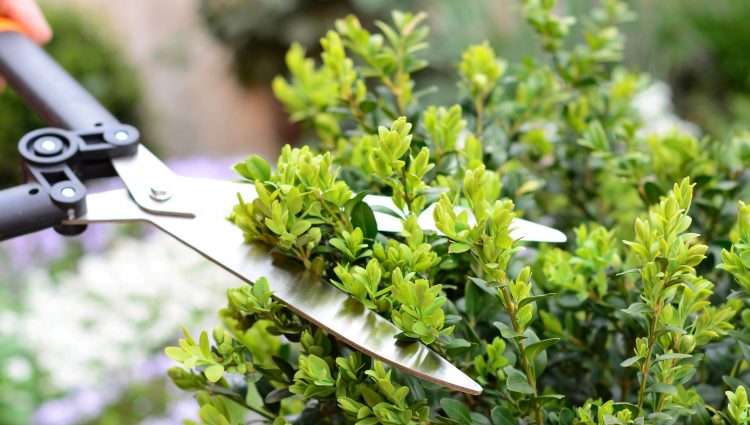Hedge pruning
While hedges look beautiful and are great for wildlife, they often intrude onto the pavement and become hazardous for blind and partially sighted people.
As part of our #CutItBack campaign we’re urging everyone to keep their hedges trimmed back to their property line. On this page, we will explore how to prune some of the more common types of hedges.
Privet hedge
Privet hedges are very hardy and will tolerate being pruned throughout the summer.
You can cut them back hard (both height and depth), but this is best done in the spring or early summer. This is so the hedge has time to regenerate before the winter. Radical pruning will leave the plant looking bare and unattractive but this will, given time, infill with side shoots through the growing season.
Note: Birds like to nest in privet hedges so please ensure to check for any nesting birds before pruning.
Useful links
- Pruning privet hedges: when & how – Plantura
- How To Prune A Privet Hedge – Hopes Grove Nurseries
- Privet Hedge (Ligustrum) | best4hedging
Beech hedges
Beech is a popular choice for boundary borders and, if kept tidy, can be an attractive backdrop for a garden.
Birds love to nest in beech hedges so pruning is a must before nesting starts, and then again after.
Early spring (February) is an ideal time to cut off old and diseased branches and greatly thin out the hedge. During this heavy prune, you can cut it directly into shape, remembering to keep the top narrower than the bottom so that light gets to the full hedge.
The hedge will then grow throughout the summer, and will require another light trim around July to further branch the hedge and ensure a compact growth form (just ensure birds have stopped nesting).
Useful links
- Pruning beech hedges: when & how – Plantura
- When to Trim a Beech Hedge? – Hopes Grove Nurseries
- Prune Beech and Hornbeam Hedges – BBC Gardeners World Magazine
Holly hedges
Holly is a well-known plant that we link with Christmas, due to its deep green prickly leaves and red berries.
It can be grown in to an attractive looking hedge but due to its growing habit, can become unruly and unattractive if not well maintained.
There are many varieties of Holly and pruning is different for most of them. However, the traditional English Holly is best cut back in Spring, when the likelihood of hard frosts is over and the winter berries have been eaten by the birds.
Prune holly to maintain shape and remove unsightly growth. Ensure to remove any dead or diseased branches but cut carefully with secateurs to encourage new growth. Cutting with sheers will eventually lead to uneven growth. If needed,
Holly can be cut back to the ground but be sure to do this in the winter when the plant is dormant.
Useful links
- How And When To Prune Holly Bushes | Horticulture.co.uk
- When is the Best Time for Holly Tree Pruning? | T.H. Tree Services Essex (thtreeservices.co.uk)
- Expert advice on growing evergreen Holly in the UK (gardenfocused.co.uk)
Laurel hedges
Laurel is a popular shrub due to its fast growing nature and thick foliage. However, if left unkept, then Laurel can widen each growing year and slowly take over valuable garden space. Laurel is a hardy plant and can resist a heavy cut most times of the year but avoid winter pruning when frost can damage the newly cut edges. For best results, cut back in late spring when frosts are unlikely and new growth is just starting to shoot. Like all plants, ensure to cut out any dead or diseased parts of the plant first and then thin out inner branches to allow more air flow and light through the plant. This will ensure better growth and a denser plant through the summer. If rejuvenating an overgrown hedge, then you may prefer to tackle one side per year so that you’re not left with a bare stump for a couple of years whilst waiting for new growth.
- How Do I Rejuvenate Overgrown Laurel Hedges? – Hopes Grove Nurseries
- Laurel Hedging – A Complete Guide to Laurel Hedging
- How to prune a Laurel Hedge | Hedging Plants Direct
General pruning pages
- Pruning hedges / RHS Gardening
- Trimming and maintaining native hedges – Woodland Trust
- A Guide to Pruning and Trimming Hedges | Hedging UK
- How to cut, prune & trim hedges: the ultimate beginner guide – Garden Ninja: Lee Burkhill Garden Design
Stay in the know
Want to get involved in our national campaigns? Stay up to date with news from Sight Loss Councils and Thomas Pocklington Trust by signing up to our mailing list



